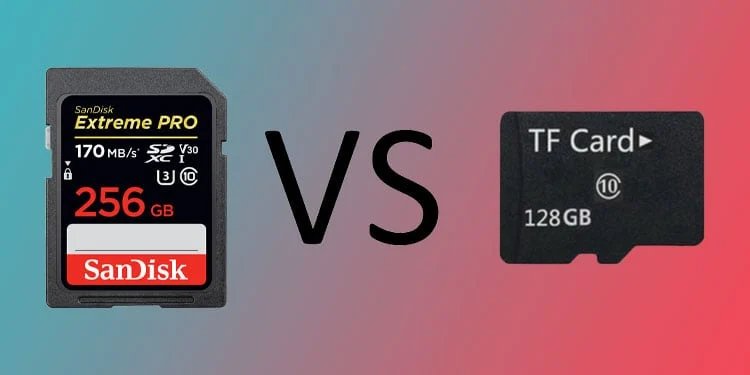Ladies and Gentlemen, fasten your digital seatbelts because today, we’re diving into the high-speed world of memory cards—specifically, the eternal face-off between the tiny titans: TF (TransFlash) cards and SD (Secure Digital) cards. If you’re staring at your device screen and scratching your head over which one to pick, fear not! I’ve taken the plunge into this microcosm of memory mastery to provide you with some insights.
Firstly, let’s unravel the mystery behind these acronyms. TF cards, also known as microSD cards, were initially developed by SanDisk, later adapted by various manufacturers and renamed microSD. SD cards, on the other hand, cover a broader spectrum, including standard SD, miniSD, and microSD variations. But today, we’ll focus on the direct comparison between TF (microSD) and SD cards.
Capacity and Compatibility
When it comes to capacity, both cards offer a diverse range, from a few gigabytes to monstrous terabyte options. The compatibility factor, though, is where the paths diverge. SD cards are generally more widely accepted across devices, from cameras to smartphones to gaming consoles. They’ve become the darlings of the tech world, easily slipping into multiple devices without much hassle.
TF cards, while incredibly compact and efficient, might require an adapter for devices that specifically accommodate SD cards. This adaptability issue could potentially sway your decision, especially if you switch devices frequently or rely on compatibility with a broader range of hardware.
Speed and Performance
Ah, the need for speed! This is where the battle intensifies. Both card types have varying speed classes, but microSD cards tend to edge ahead in the speed department. If you’re into 4K video recording or high-speed photography, a microSD might be your best bet due to its faster read and write speeds. However, SD cards aren’t far behind, especially with the newer UHS-II and UHS-III speed classes enhancing their performance.
Reliability and Pricing
Reliability is paramount when entrusting these cards with our precious memories or crucial data. Here’s the lowdown: while both TF and SD cards boast reliability, SD cards have a slight edge in terms of robustness and durability. They tend to withstand harsh conditions better, including water, shock, and temperature fluctuations. That said, both cards generally offer solid reliability, but it’s always wise to handle them with care.
As for pricing, the battle is fierce, but usually, microSD cards come out as the more budget-friendly option. However, factors like speed class, brand, and storage capacity can significantly impact the price of either card.
The Verdict
So, which one should you pick? If versatility and broader compatibility are your top priorities, SD cards might be your loyal companion. But if speed and compactness are what you crave, a TF (microSD) card could be your new best friend.
In my personal experience, for everyday use across various devices, I lean toward SD cards for their broader acceptance. However, for specific needs like high-speed recording or ultra-portability in smaller devices like drones or action cameras, the microSD card becomes an invaluable asset.
Remember, the choice ultimately boils down to your preferences and the intended use. Whether you opt for the diminutive yet mighty TF card or the ubiquitous SD card, safeguard your data, handle them with care, and they’ll faithfully serve you for years to come.
Also Look at this Article



